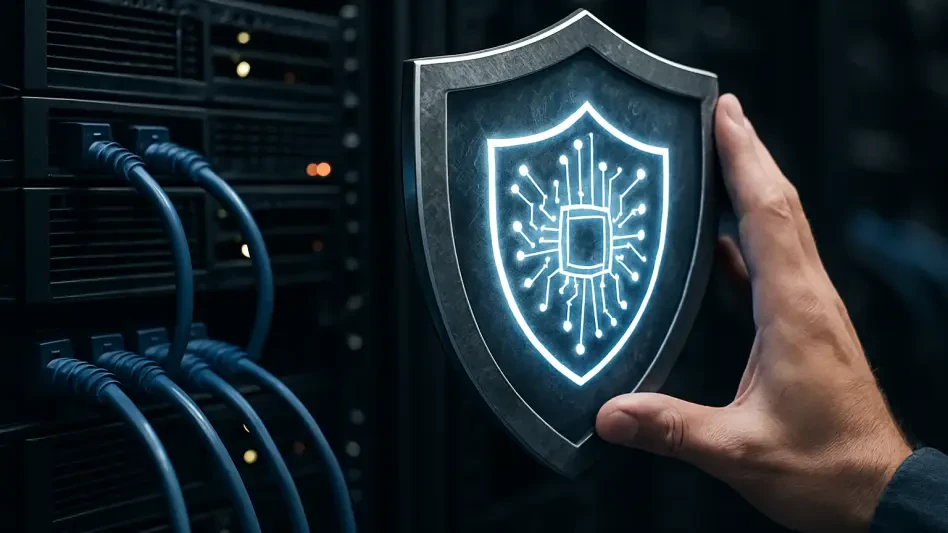In an era where digital threats loom larger than ever, businesses face an unprecedented challenge in safeguarding their operations against cyberattacks that are not only more frequent but also increasingly sophisticated. The global economy is losing trillions due to cybercrime, with estimates from Cybersecurity Ventures projecting losses to reach a staggering $10.5 trillion by the time recent data was compiled. High-profile breaches at major companies such as M&S and Harrods serve as stark reminders that no organization, regardless of size or industry, can consider itself immune. This alarming reality prompts a critical examination of traditional security measures. Compliance with regulatory standards, while necessary, often falls short in addressing the dynamic and evolving nature of modern cyber threats. Instead, a deeper, more adaptive approach known as cyber resilience emerges as the cornerstone of true protection. This shift from merely checking boxes to building robust, proactive defenses is not just a strategic advantage—it’s an urgent imperative for survival in today’s digital landscape.
The Limitations of Relying Solely on Compliance
Compliance with frameworks like GDPR, HIPAA, or PCI-DSS provides a structured starting point for cybersecurity, but it is far from a comprehensive solution. These regulations establish essential guidelines, yet they often lag behind the rapid pace at which cyber threats evolve. Sophisticated attackers exploit gaps that compliance audits frequently overlook, such as vulnerabilities in hybrid work environments or interconnected systems. Many organizations, constrained by underfunded security programs, find that simply adhering to these standards does little to counter advanced tactics like AI-driven attacks or polymorphic phishing. The result is a dangerous mismatch between the static nature of compliance requirements and the fluid, innovative strategies employed by cybercriminals, leaving businesses exposed to risks that go beyond the scope of regulatory checklists.
Beyond the technical shortcomings, compliance often breeds a perilous sense of overconfidence among organizations. The mindset of “it won’t happen to us” can take root after passing an audit, creating a false illusion of safety. This complacency ignores the universal vulnerability to cybercrime, as evidenced by breaches across diverse sectors. When an attack does occur, the realization that meeting minimum standards did not equate to preparedness can be devastating. Compliance, while a necessary baseline, fails to address the need for proactive vigilance and adaptability in the face of relentless threats. Businesses must recognize that achieving a passing grade on regulatory requirements is merely the first step, not the ultimate defense, in a landscape where attackers continuously refine their methods to exploit any weakness.
Crafting a Robust Defense Through Cyber Resilience
Cyber resilience offers a transformative approach by focusing on a multi-layered strategy that encompasses prevention, detection, and recovery from cyber incidents. Unlike compliance, which often remains static, resilience emphasizes proactive measures such as threat intelligence and endpoint detection and response (EDR) systems to identify risks before they materialize into full-blown attacks. Intrusion prevention systems (IPS) add another layer of defense by actively blocking malicious activity. Additionally, conducting regular Cyber Risk Assessments allows organizations to pinpoint specific vulnerabilities and prioritize remediation efforts. This continuous cycle of evaluation and improvement stands in sharp contrast to the one-time, checkbox mentality of compliance, ensuring that defenses evolve alongside emerging threats and organizational changes.
Recovery, often underestimated, forms a critical pillar of cyber resilience that sets it apart from traditional security models. The ability to restore operations swiftly after a breach can mean the difference between minor disruption and catastrophic loss. Tools like immutable backups, which prevent data tampering, and cleanroom environments for secure system restoration, ensure that businesses can rebound with minimal downtime. This focus on resilience acknowledges that no defense is foolproof; even the strongest prevention measures may be breached. By prioritizing secure recovery mechanisms, organizations can maintain business continuity and protect their reputation, demonstrating a preparedness that compliance alone cannot guarantee. This holistic approach equips companies to not only survive attacks but to emerge stronger from them.
Strengthening Security Through People and Strategic Planning
A resilient cybersecurity posture cannot rely solely on technology; the human element plays an indispensable role in fortifying defenses. Employees often serve as the first line of defense against threats like phishing or social engineering, making education and awareness training paramount. By equipping staff with the skills to recognize suspicious activity and encouraging a culture where reporting concerns is welcomed, businesses can disrupt attacks at their earliest stages. Practical measures, such as enforcing strong password hygiene and implementing multi-factor authentication (MFA), further mitigate risks stemming from human error. This blend of empowerment and accountability transforms personnel from potential liabilities into active contributors to organizational security.
Strategic planning elevates cyber resilience by integrating advanced tactics and cross-functional collaboration into the security framework. Regular penetration testing simulates real-world attacks to uncover weaknesses, while real-time threat intelligence keeps defenses aligned with the latest risks. Incident response plans, thoroughly tested and refined, ensure swift and effective action during a crisis. Collaboration across IT, leadership, and other business units embeds cybersecurity into the core of organizational operations, rather than treating it as an isolated concern. This unified approach contrasts sharply with the narrow focus of compliance, offering a dynamic shield against an ever-shifting threat landscape. By prioritizing both human vigilance and strategic foresight, companies can build a security posture that adapts and endures.
Paving the Way for a Resilient Future
Reflecting on the journey through past cyber challenges, it becomes evident that compliance served as a necessary foundation but fell short as a standalone safeguard. Businesses that relied solely on regulatory adherence often found themselves unprepared for the ingenuity of modern attackers. The shift toward cyber resilience marked a turning point, as organizations began to embrace proactive prevention, robust detection, and secure recovery as integral components of their defenses. This evolution highlighted a critical lesson: true security demanded adaptability over mere adherence to static rules.
Looking ahead, the path to lasting protection lies in embedding resilience into every facet of business operations. Companies should prioritize ongoing investment in advanced tools like threat intelligence and immutable backups, while fostering a security-aware culture among employees. Partnering with expert managed service providers can further bridge gaps in expertise and resources. By committing to continuous improvement and cross-departmental collaboration, businesses can stay ahead of emerging threats and ensure operational continuity, securing not just compliance but a fortified future.








